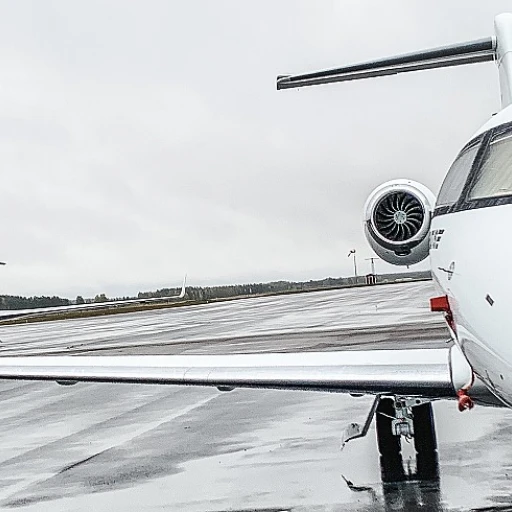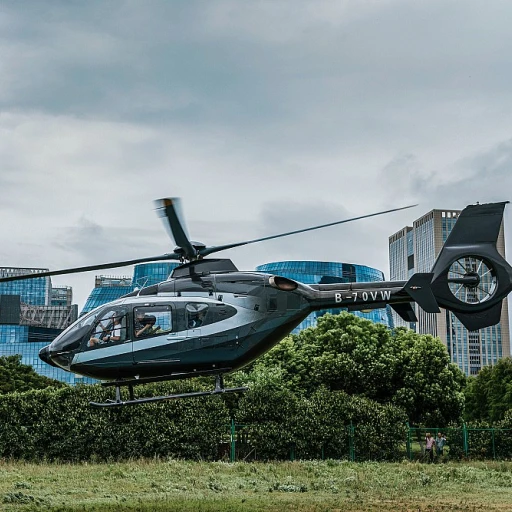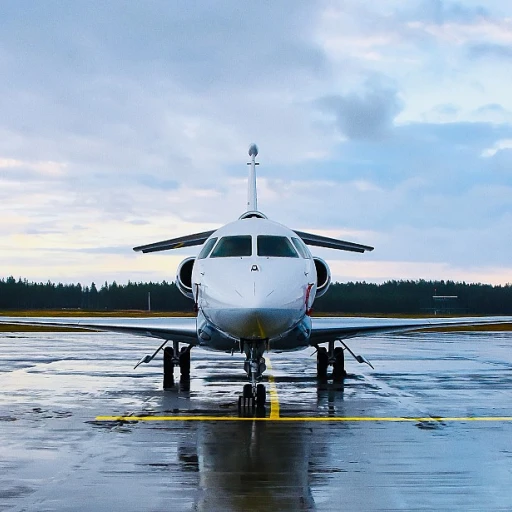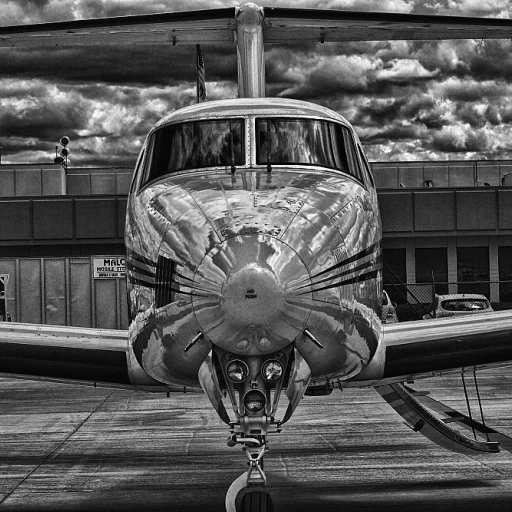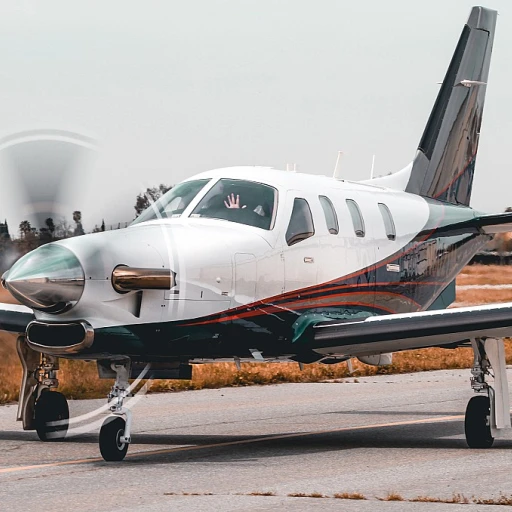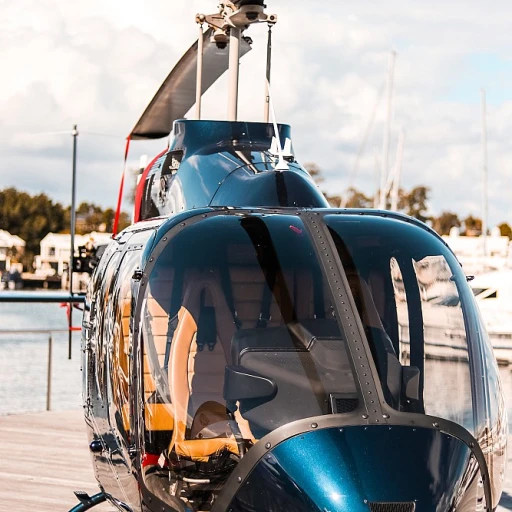Understanding the Role of a Private Jet Pilot
Getting to Know the Private Jet Pilot Life
Becoming a private jet pilot isn't just about flying high-end aircraft like the Bombardier Challenger or Cessna Citation. It's about embracing a lifestyle that combines precision, luxury, and a unique set of responsibilities. Private jet pilots are the backbone of private aviation, ensuring that high-profile clients reach their destinations safely and comfortably.
Unlike commercial pilots, private jet pilots often enjoy more flexibility in their schedules. However, this comes with the need to be on-call and ready to fly at a moment's notice. It's not just about the flight hours; it's about the quality of service provided during those hours.
The Day-to-Day of a Private Jet Pilot
Every day as a private jet pilot is different. One day you might be flying a charter flight across the country, and the next, you're jetting off to an international destination. This variety is part of what makes the career so appealing to many pilots.
- Flight Planning: Pilots must meticulously plan each flight, considering factors like weather, air traffic, and client preferences.
- Pre-Flight Checks: Ensuring the aircraft is in top condition before takeoff is crucial.
- Client Interaction: Building rapport with clients can lead to repeat business and a more enjoyable flying experience for all.
For those interested in this career, it's essential to understand that flying private jets requires more than just a pilot license. It demands a commitment to excellence and a passion for aviation. For more insights into the life of a private jet pilot, you can explore navigating the skies with precision and luxury.
Licensing and Certification Process
The Path to Securing Your Pilot License
To officially take the captain's seat in a sleek jet, obtaining the necessary licenses and certifications is your ticket to ride. Securing these credentials is a critical milestone on your flight path. Here's how to ace this phase of your aviation journey.Clearing the Medial Checkpoint
First things first, before you start this high-flying career, you need to be in tip-top shape. The aviation world requires a clean bill of health, known as a medical certificate. Your vision, hearing, and overall health must meet specific standards, as your wellness is essential up there in the clouds.Aim for Your Private Pilot License
The starting block is the Private Pilot License (PPL). It's your foundational step and opens doors to more comprehensive training. The PPL allows you to fly an aircraft privately without compensation. Achieving this requires at least 40 flight hours, which include flying with an instructor and solo time. Ground school is where you'll pick up critical knowledge on navigation, regulations, and weather.Working Towards the Commercial Pilot License
Next up is the Commercial Pilot License (CPL), and this is where things get serious. It allows you to earn money while flying, marking a pivotal shift into professional aviation. To earn your CPL, accumulate a minimum of 250 flight hours. You'll delve deeper into instrument rating — a skill crucial for flying through clouds and challenging weather conditions by relying solely on instruments.Gaining Additional Ratings and Endorsements
If you're eyeing the cockpit of sophisticated aircraft like the Cessna Citation or Bombardier Challenger, further ratings are a must. For instance, a multi-engine rating will have you piloting aircraft with more than one engine, and an instrument rating is crucial when visibility is limited. Such skills enhance your flying prowess.Keeping Your Pilot Certificate Up To Date
Once you've got your licenses, keeping them active is vital. Regular medical checks and recurrent flight training ensure you remain fit for the skies. The aviation industry is dynamic, and constant learning is part of the game. With these certifications in your arsenal, you’re ready to explore further opportunities in private aviation. Whether you aim to fly charter jets or become a standout private jet pilot, each license and certification plays a crucial role in your future success. For more on finding job opportunities in the private aviation sector, check out private jet job opportunities.Networking and Finding Job Opportunities
Building Connections in Private Aviation
So, you've got your pilot license, and you've clocked in those crucial flight hours. Now, it's time to make some connections. In the private jet industry, who you know can be just as important as what you know. Networking is key to finding opportunities that might not be advertised publicly.
Start by joining aviation clubs and associations. These groups often hold events where you can meet other pilots and industry professionals. Consider organizations like the Aircraft Owners and Pilots Association (AOPA) or the Experimental Aircraft Association (EAA). These communities are great places to share experiences and learn from seasoned pilots.
Leveraging Social Media and Online Platforms
In today's digital age, social media platforms like LinkedIn can be powerful tools for connecting with other aviation professionals. Follow companies and individuals in the private jet sector to stay updated on job openings and industry trends. Engage with their content to make your presence known.
Online forums and groups dedicated to aviation can also be valuable. Websites like JetCareers.com and PPRuNe (Professional Pilots Rumour Network) offer spaces to discuss job opportunities and industry insights. Don't hesitate to ask questions and share your journey; you never know who might be reading.
Attending Aviation Events and Conferences
Attending industry events is another excellent way to meet potential employers and colleagues. Airshows, trade shows, and conferences provide opportunities to interact with representatives from private jet companies. These events often feature seminars and workshops that can enhance your knowledge and skills.
Consider attending events like the National Business Aviation Association (NBAA) convention or regional airshows. These gatherings are where the who's who of private aviation come together, offering a chance to make lasting connections.
Reaching Out to Charter Companies
Directly contacting charter companies can also be effective. Research companies that operate aircraft you're interested in flying, such as the Bombardier Challenger or Cessna Citation. A well-crafted email expressing your interest and qualifications can open doors. Highlight your flight training, pilot certificate, and any specialized skills like multi-engine or instrument rating.
Be persistent but professional. Follow up if you don't hear back right away, and always express your enthusiasm for private aviation. Remember, every interaction is a chance to leave a positive impression.
By actively building your network, you'll not only increase your chances of finding job opportunities but also gain valuable insights into the private jet industry. Each connection brings you one step closer to your dream career as a private jet pilot.
Navigating the Challenges of Private Jet Aviation
Overcoming Hurdles in Private Jet Flying
Becoming a private jet pilot isn't just about the glamour of flying a Cessna Citation or the thrill of handling a Bombardier Challenger. It's a career that demands resilience and adaptability. The challenges faced in private aviation can test even the most seasoned pilots. Here's a look at what you might encounter and how to tackle them.
Adapting to Unpredictable Schedules
One of the biggest hurdles is the unpredictable schedule. Unlike commercial pilots who often have fixed routes, private jet pilots must be ready to fly at a moment's notice. This means flexibility is key. Balancing personal life with such a demanding schedule can be tough, but it's part of the job. Pilots often find themselves in different time zones, so staying organized and managing rest is crucial.
Meeting High Client Expectations
Flying private jets often means catering to high-profile clients. These passengers expect top-notch service, and pilots are an integral part of delivering that experience. From ensuring a smooth flight to accommodating last-minute requests, the pressure is on to provide a flawless journey. Building a rapport with clients and understanding their preferences can make a significant difference.
Maintaining Peak Physical and Mental Health
With the rigorous demands of the job, maintaining physical and mental health is essential. Regular medical checks are mandatory to keep your pilot license active. Stress management techniques and a healthy lifestyle can help you stay fit for flying. Remember, your well-being directly impacts your ability to operate the aircraft safely.
Keeping Up with Training and Certifications
Continuous learning is a part of every pilot's career. From renewing your pilot certificate to acquiring new skills like multi-engine and instrument rating, staying updated with the latest in aviation is necessary. Regular training sessions and ground school help keep your skills sharp, ensuring you're ready for any situation.
Building a Strong Network
Networking plays a crucial role in advancing your career. Connecting with other pilots and industry professionals can open doors to new opportunities. Attend aviation events, join pilot associations, and engage in online forums. These connections can lead to job offers, mentorship, and valuable insights into the private aviation industry.
Remember, the path to becoming a successful private jet pilot is filled with challenges, but each obstacle overcome is a step closer to a rewarding career in the skies.

